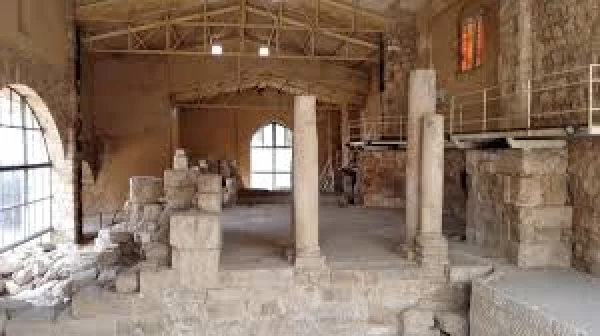
Madaba Archaeological Museum
Madaba Archaeological museum
was built in 1978 and is located in a courtyard at the southern end of a dead-end alley that branches off from Al Balqa Street. It is often described as one of the best places for sightseeing in Jordan.
This museum attracts a large number of tourists due to its architectural splendor and its impressive display of ancient relics. The Madaba Archaeological Museum offers a glimpse into Madaba's history through its impressive collection of stone artifacts, pottery, lamps, mosaics, and precious stones.
It is several adjacent houses with mosaic floors that the General Department of Antiquities completed forming the nucleus of a museum.
Mosaicos de Madaba
In a corner of the visual clips, the museum presents a presentation on the city of Madaba, dealing with the movement of tribes to it and its revival in the year 1880 AD, the discovery of artifacts that tell a history extending to 1200 BC, the discovery of a historic cemetery and holdings related to kings in previous eras.
In the external courtyard of the museum, mosaic pieces transferred from Hesban, Ma'in, Qastal, and Mount Nebo, in addition to a group of Corinthian and Ionic crowns, columns, and altars dating back to the Byzantine period. The museum also includes collections of pottery and glassware dating back to the Hellenistic, Roman, Byzantine, and Islamic eras.
Among the most important antiquities in the museum is a group of Islamic pottery and bronze vessels that were found in one of the rooms of Umm Al-Walid Palace.
They were restored and maintained at the Institute of Restoration in Geneva and are now on display in Madaba. The museum also contains silver Ptolemaic coins found in the Musa square area and found with it as well. Umayyad gold dinars set. Madaba is considered one of the most important mosaic centers, as it contains one of the largest areas paved with mosaics throughout the ancient city. The most prominent of these floors is the map of the Holy Land in the Church of St. George.
There are many mosaic sites surrounding the city of Madaba, the most important of which is the city of Umm al-Rasas, known since ancient times as (Mayfa’a), in which fourteen churches were built, most of which date back to the fifth and sixth centuries AD. One of the most famous of these churches is the Church of St. Stephen, which was built during the Abbasid period in the eighteenth century.
The General Department of Antiquities decided to open the Antiquities Museum in Madaba by completing several adjacent houses whose lands are furnished with mosaics, as these houses formed the nucleus of the Archaeological Museum.














